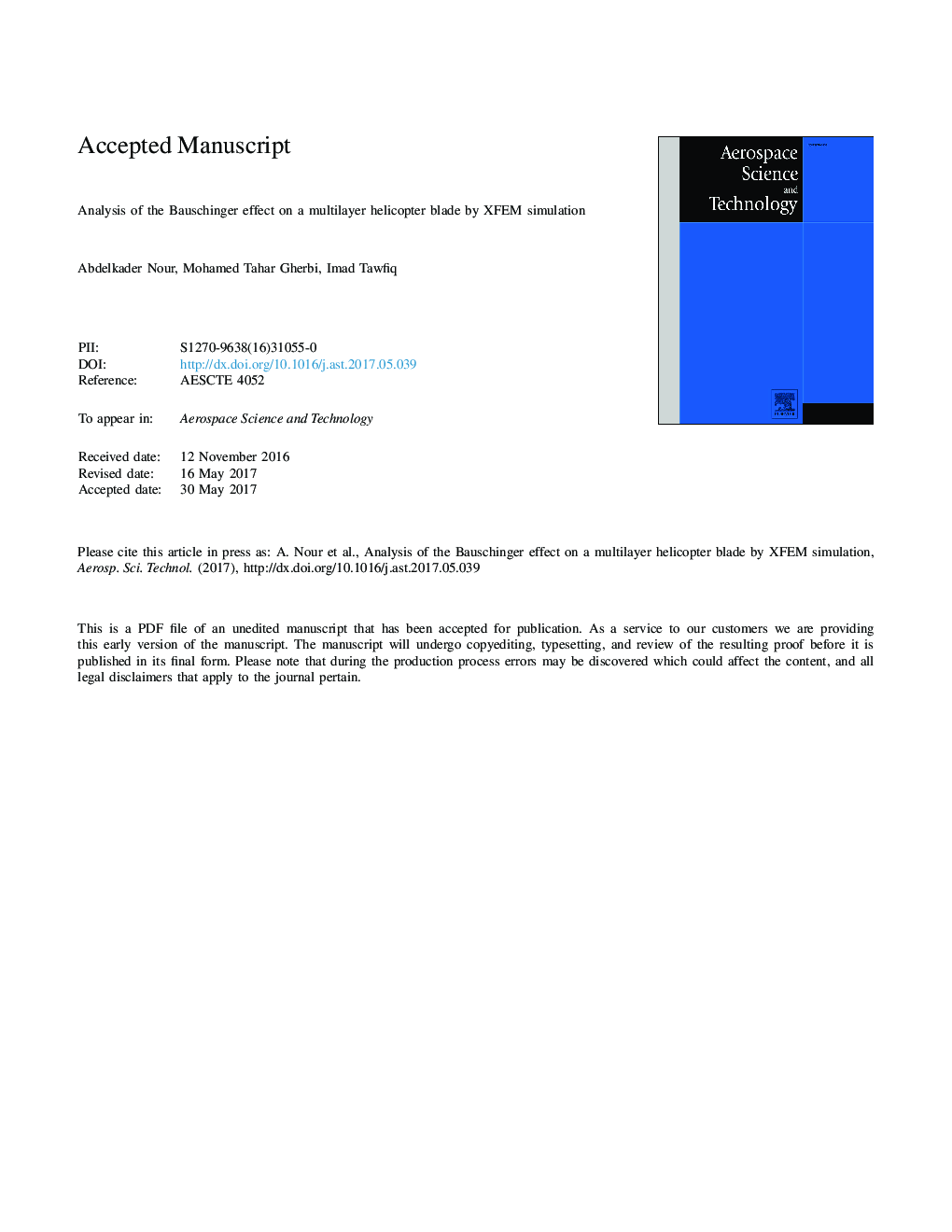| Article ID | Journal | Published Year | Pages | File Type |
|---|---|---|---|---|
| 5472721 | Aerospace Science and Technology | 2017 | 40 Pages |
Abstract
Two major helicopter blade structural defects may disturb flight stability before crashes: i.e. debonding of the isotropic skin enveloping the orthotropic materials of the leading edge (UD glass - epoxy, aluminum honeycomb core) and cracking of the lower and upper surface shields. During beats, the thin metal skin of the leading edge is subjected to tensile stresses followed by compression stresses, capable of causing the Bauschinger effect, defined as a reduction of the elastic limit. Thus the purpose of this study is to present the dynamic behavior of a composite helicopter blade based on the Westergaard formulation of crack problems and a simulation using the extended finite element method (XFEM). This is followed by a comprehensive discussion on near crack tip fields for a helicopter blade composed of orthotropic materials, in order to develop the necessary enrichment functions for the XFEM formulation. Finally, several numerical simulations are provided to illustrate the validity, robustness and efficiency of the approach proposed to evaluate mode I stress intensity factors and J integrals in composites. The study of the transient behavior allows determining the vibration responses due to unbalance and different excitation modes.
Keywords
Related Topics
Physical Sciences and Engineering
Engineering
Aerospace Engineering
Authors
Abdelkader Nour, Mohamed Tahar Gherbi, Imad Tawfiq,
